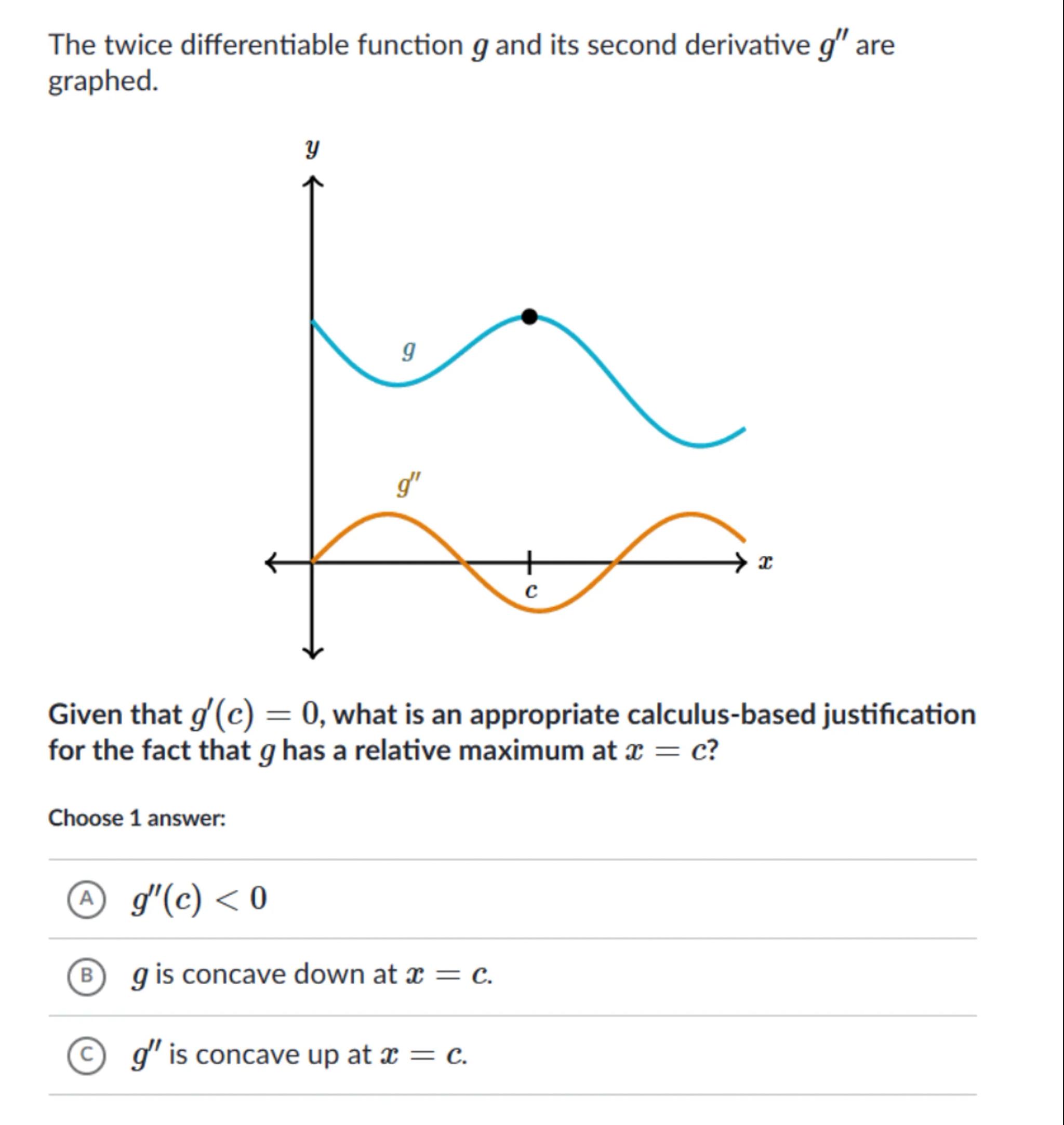
Sia

Question
Math
Posted over 1 year ago
The twice differentiable function and its second derivative are graphed.
Given that , what is an appropriate calculus-based justification for the fact that has a relative maximum at ?
Choose 1 answer:
(A)
(B) is concave down at .
(c) is concave up at .

Answer from Sia
Posted over 1 year ago
Solution by Steps
step 2
Since , is a critical point. To determine if it is a relative maximum, we examine the second derivative
step 3
From the graph, has a zero at and changes sign from negative to positive as increases through
step 4
This sign change indicates that is concave down before and concave up after
step 5
Therefore, has a relative maximum at because and is concave down at
B
Key Concept
Concavity and Second Derivative Test
Explanation
The second derivative test states that if and , then has a relative maximum at because the function is concave down at that point.
Not the question you are looking for? Ask here!
Enter question by text
Enter question by image
Unlock Smarter Learning with AskSia Super!
Join Super, our all-in-one AI solution that can greatly improve your learning efficiency.
30% higher accuracy than GPT-4o
Entire learning journey support
The most student-friendly features
Study Other Question